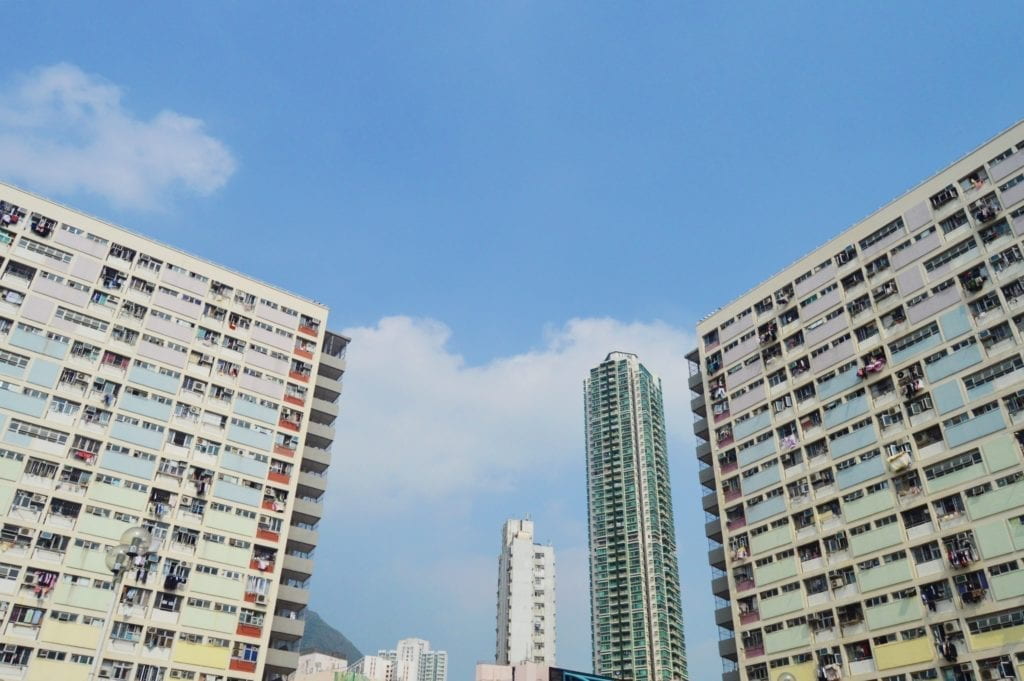To me, good design encompasses good aesthetics, functionality, and usability. As a visually artistic person, I pay lots of attention to aesthetics. I’ve made visual art for most of my life, so I have an eye for what looks good and what can use improvement. Since I have the most experience in drawing, I decided to create an illustration collage inspired by my recent trip to Hong Kong.

Hong Kong is so full of saturated colors that I knew I had to take an advantage of them in a visual creation. The perfect setting was the Choi Hung Estate, an apartment complex painted in pastel rainbow colors. I was particularly inspired by a photo taken of two of the buildings, emulating a mirror reflection of each other. I was drawn to the clean lines and complimentary colors, and decided to use it as the background for the collage.

I wanted to utilize my drawing skills by imposing a digital painting in the middle of the photo. I drew a photo of my friend who I traveled with in Photoshop, making some changes to the colors in order to emulate the same tones on the buildings. After some playing around with the background, I decided to make bold, horizontal blocks in the rainbow colors to mirror the color layout on the buildings.

Finally, I arranged the illustration on top of the photo, adding a red border to accentuate the red accents on the apartments and adding four block elements on the sides to add to the graphic look.

This collage represents good design to me because it is aesthetically cohesive. The lines in the buildings work very well to draw the eyes to the center of the collage, putting emphasis on the illustration in the middle. The colors all work well together without clashing or becoming too overwhelming, with none of them looking too out of place. The color theme all draws from the colors in the background photo, which makes the collage look more cohesive. Additionally, the block imagery in the apartment photo is repeated in the illustration’s background, the bold border, and the side square graphics. Because the elements of the collage all work together smoothly, this is a good design.




